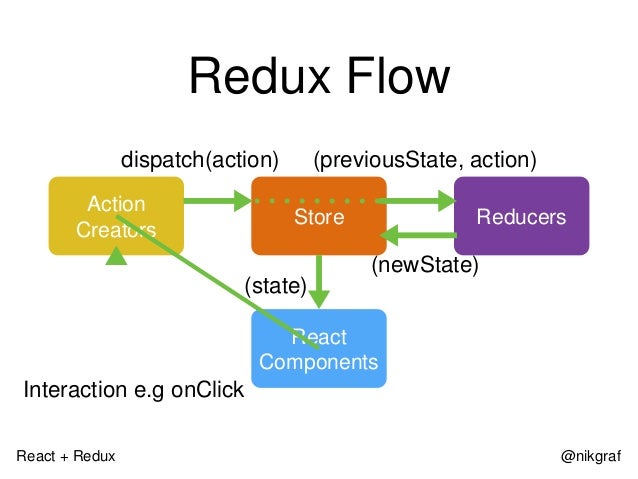나의 질문
|
|
여기서 lecture를 this.props에서 가져오는데 그 props는 어디에서 오는지가 궁금해
사부의 답변
props를 가져오는 곳이 3개가 있어요.
- 부모 Component가 주는 경우
- Redux가 주는 경우
- react-native-router-flux 라이브러리를 사용하는데 그때 화면전환을 할때 Action 을 이용하는데 그 화면전환을 할때 주는경우
그렇다면 const { lecture } = this.props; 이건 어디서 가져왔을까요?
그걸 알려면 일단 얘가 screen 컴포넌트인지 자식 컴포넌트인지를 봅니다.
왜냐면 자식컴포넌트는 무조건 부모 component에게만 props을 받고 redux나 router을 사용하지 않기로 했기 때문이죠
Component가 screen일 경우
부모 component가 없기때문에 redux나 router 입니다
근데 redux의 경우에는
|
|
보통 screen은 일반 자식 컴포넌트와 다르게 connect라는 걸로 component을 감싸는데 저 connect가 redux와 연결하는 고리 같은거에요.
저렇게 하면 component에서 this.props.user가 생겨요.
그리고 그 this.props.user는 현재 redux의 state의 userInfo가 들어가게 되는거죠
그래서 맨위를 보면 redux에서 받는 props을 알수 있어요
userInfo는 Reducer에 있는 userInfo.js 얘가 되는거구요
|
|
timeTableScreen은 timeTable.js reducer와 setting.js reducer를 참조해서 가져오게 됩니다.
그렇다면 위에 redux에서 정의되지 않는 props는 router에 의해서 가져오는 props라고 생각할 수 있죠.
그렇다면 lectureDetail에서 가지고 있는 this.props.lecture는
|
|
timeTableScreen을 보면 저걸로 인해서 어디를 클릭했는지를 알수가 있어요.
월요일 1겐 이면 day: 0 time: 0이 this.props 에 들어가게 되겠죠.
저렇게 해서 화면끼리 데이터를 교환할수 있어요.
|
|
일단 맨끝만 보면
this.props.lecture에 stateProps.timeTable[ownProps.day][ownProps.time],
가 들어간다는걸 알수가 있어요
lecture는 저기에서 오는거에요
그리고 this.props.timeTable 에는 state.timeTable 이 들어가겟죠
여기까지는 이해가 되시나요?
더 깊이 나아가서
Q) 흠 철아 근데 redux의 state는 schema같이 형태만 정해져있는거야 아니면 정보가 저장되어있는거야?
정보가 저장되어 있어요.
형태만 있는게 처음 상태에요
그리고 우리가 dispatch(action.xxxxxx) 이런식으로 쓰는 코드가 있잖아요.
그 action이 reducer 에 있는 안에 있는 코드를 불러내요.
그러면 그에 알맞게 state가 바뀌게 되는거죠.
가장 쉬운걸로는
|
|
이렇게 되어 있잖아요
LoginScreen 보면 로그인 성공하면
dispatch(action.login(sessionID)); 이런코드를 불러요
응응
저기 있는 login은
|
|
여기 있는데
흐음 일단 setSession은 예외이니 그거 말고 login하면 return이
return { type: LOG_IN, sessionID };
이거죠
Q) dispatch(action.login(sessionID));이 코드에서 session.js를 참조하라고 어디에 나와있어?
action이 import action from '../../actions'
이런 코드 위에 있죠 그러면 action/index.js 을 참조하겟죠?
우리 컴포넌트들도 그냥 폴더까지만 참조하게하면 자동으로 index.js 을 참조하니까요
그래서 action/index.js을 보면 얘가 session을 참조해요
… 이게 참조표신가 보네
참조보다는 import가 맞겠죠.
그러면 return { type: LOG_IN, sessionID }; 얘가 return 되고
그걸 dispatch가 reducer로 보내요.
그러면 또 reducer/index.js을 보고
지금 type: LOG_IN 이죠
type: LOG_IN
|
|
그러면 action.type이 LOG_IN이 코드가 실행이 되고
Q) 아 그럼 index.js안에 사실상 모든 reducer type가 들어가있는거나 마찬가진데 알기 쉽게 나눈거 뿐이구먼
저거 하나하나 import 하면 귀찮아 지니깐 바로 reducer 까지만 import 하도록 한거에요.
action도 마찬가지고요.
|
|
여기서 return값이
새로운 state.session 값으로 바뀌어요
|
|
이게 초기치.
그래서 sessionID가 생기고 logged가 true가 되죠.
마찬가지로 reducer/schedule.js 을 보면
|
|
스케쥴 추가면
뒤에 새로운 아이템을 붙이고
edit면 그 아이템만 교체
delete면 그거만 제거
아하 알겠어. 매우매우 알기 쉬운 설명이구만!
아 드디어 리덕스의 매커니즘을 이해했어 ㅠㅠ.
데이터변경을 위한 흐름을 파악하면 되는거네.
이런식으로 되어있다보니 아무래도 전에 봤던 그림이 어려워보였던 것 같아.

the upper picture is from http://www.slideshare.net/nikgraf/react-redux-introduction
이제는 이 그림도 이해할 수 있게 되었어!
리덕스의 매커니즘
dumbcomponent에서 데이터가변화 => screen으로 데이터가 감 => action생성 => dispather에 의한 redux상의 데이터변화(reducer)
2편에서 게속…